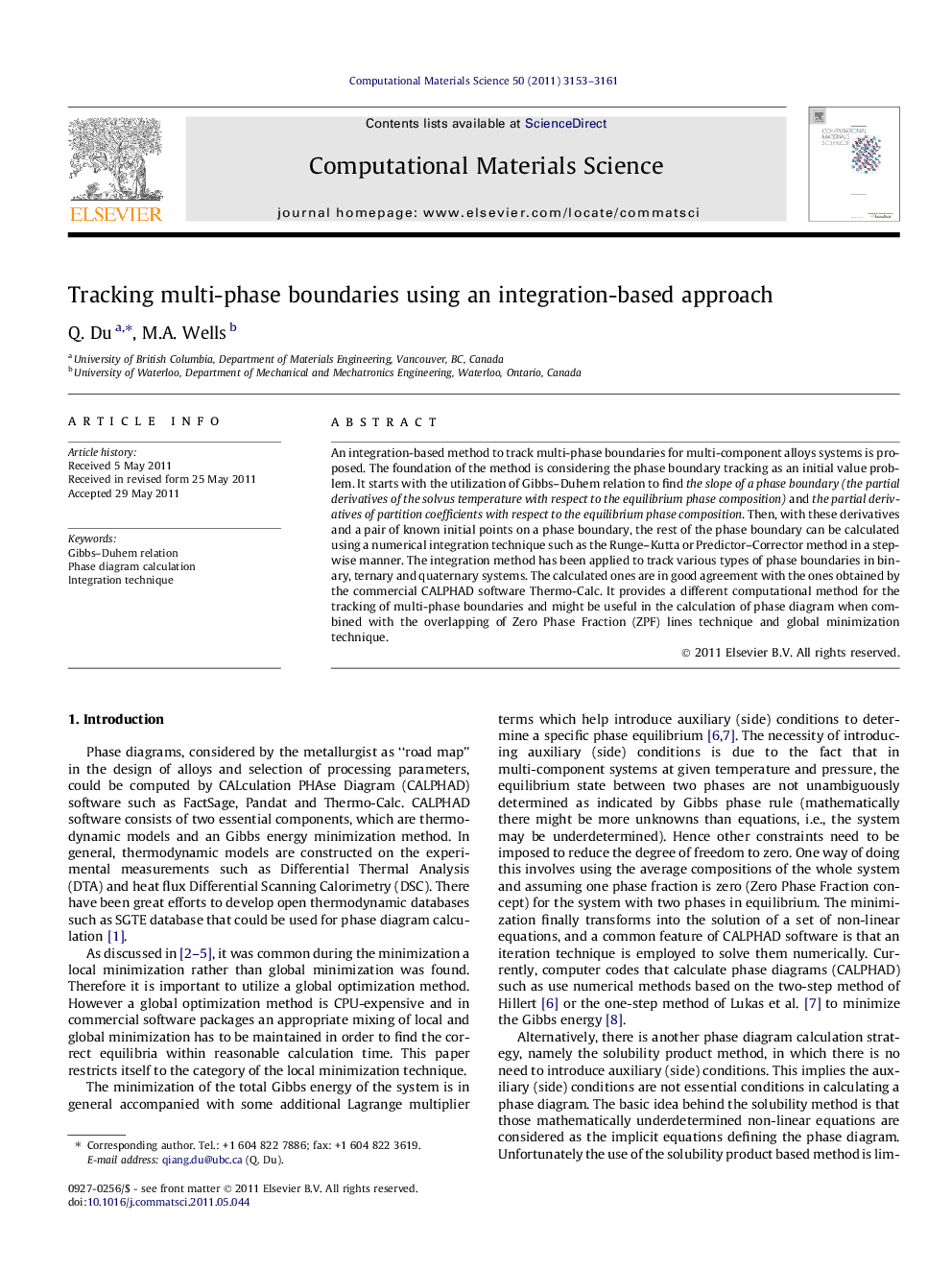| Article ID | Journal | Published Year | Pages | File Type |
|---|---|---|---|---|
| 1562226 | Computational Materials Science | 2011 | 9 Pages |
An integration-based method to track multi-phase boundaries for multi-component alloys systems is proposed. The foundation of the method is considering the phase boundary tracking as an initial value problem. It starts with the utilization of Gibbs–Duhem relation to find the slope of a phase boundary (the partial derivatives of the solvus temperature with respect to the equilibrium phase composition) and the partial derivatives of partition coefficients with respect to the equilibrium phase composition. Then, with these derivatives and a pair of known initial points on a phase boundary, the rest of the phase boundary can be calculated using a numerical integration technique such as the Runge–Kutta or Predictor–Corrector method in a stepwise manner. The integration method has been applied to track various types of phase boundaries in binary, ternary and quaternary systems. The calculated ones are in good agreement with the ones obtained by the commercial CALPHAD software Thermo-Calc. It provides a different computational method for the tracking of multi-phase boundaries and might be useful in the calculation of phase diagram when combined with the overlapping of Zero Phase Fraction (ZPF) lines technique and global minimization technique.
► Extension of the integration method to track multi-component alloy systems’ phase boundaries. ► A new computational method for the tracking of multi-phase boundaries. ► Potential application to phase diagram calculation.
